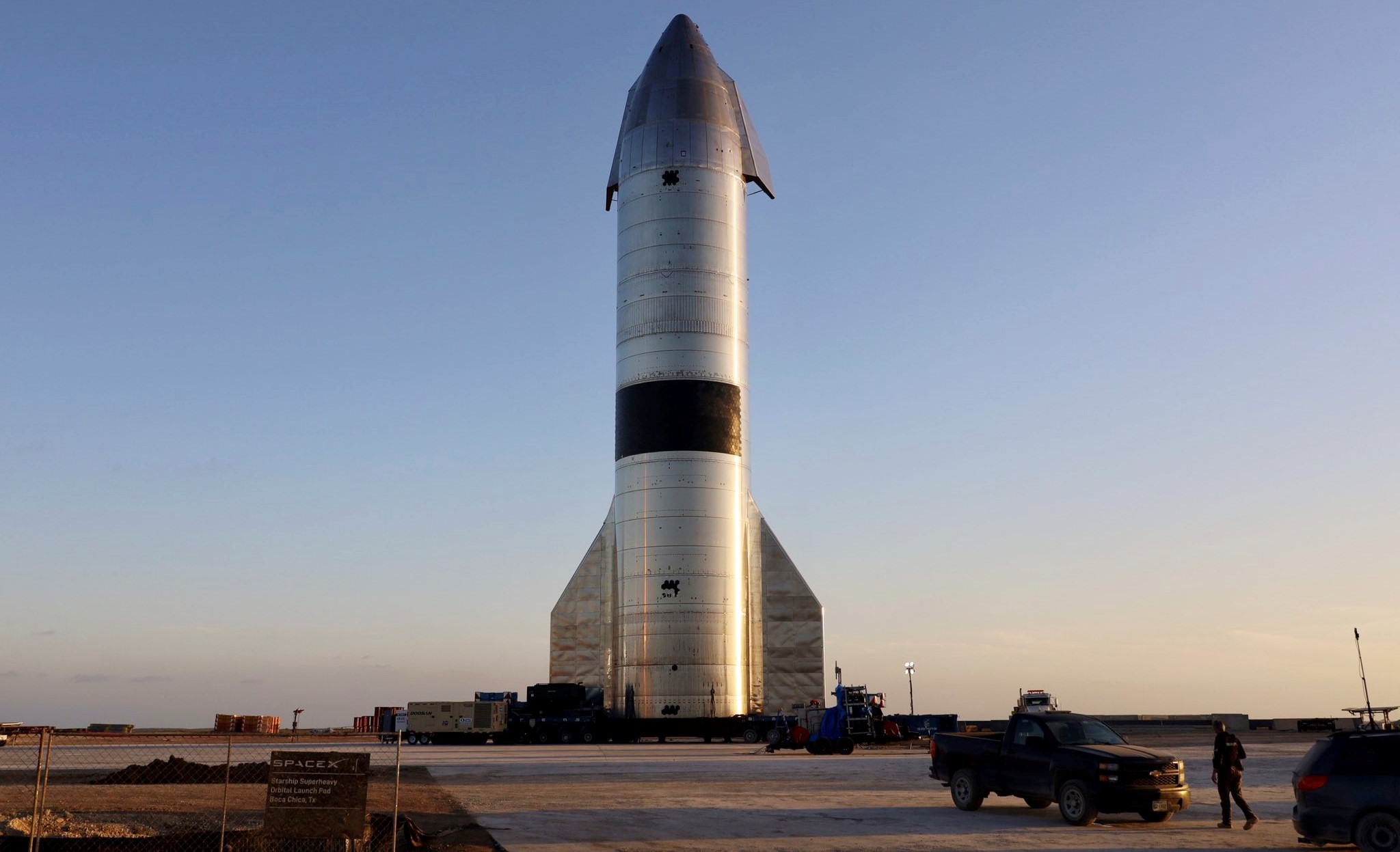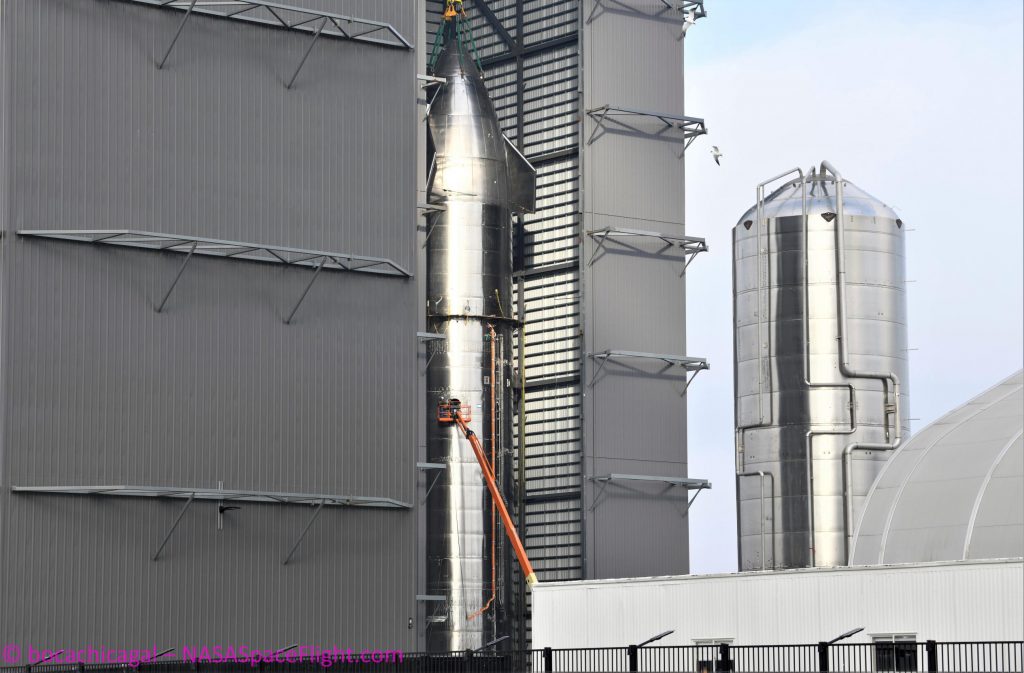

News
Elon Musk says SpaceX might refly Starship after historic landing
Update: CEO Elon Musk says that SpaceX “might try to refly SN15 soon” after it became the first Starship to ace a high-altitude launch and survive the landing. In other words, SpaceX might be about to kick off what’s bound to be a long and fruitful future of Starship reusability.
Less than six months after high-altitude flight testing began, SpaceX has successfully landed a full-size Starship prototype in one piece, giving the company its first real opportunity to inspect a flown vehicle with flaps, a nose, and three Raptor engines.
That spectacular success will simultaneously give SpaceX a wealth of data from any onboard cameras and data recorders, as well as the physical condition of Starship itself – including three Raptor engines with several minutes of flight time. While SpaceX likely already managed to determine a great deal from over-the-air telemetry and wreckage taken from Starships SN8 through SN11, it now has a virtually unharmed, full-scale, full-fidelity prototype to truly compare and contrast with more theoretical engineering and flight performance models.
Perhaps most importantly, though, SN15’s success also raises the question: what’s next for SpaceX and its Starship program?
The reality is that things could go any number of directions depending on Starship SN15’s condition and just how successful SpaceX determines the flight really was. If Starship SN15 and its tanks, flaps, and Raptors are all in impeccable condition, it’s not impossible to imagine that SpaceX could do what it did after Starship SN8’s near-total success and scrap Starship prototypes SN17, SN18, and SN19 before work really begins. While unlikely, SN15 could even fly a second time in that scenario.

Starship SN16 is already more or less complete could easily be ready to roll to the launch pad within the next week. Odds are good that SpaceX will use SN16 to (hopefully) replicate Starship SN15’s spectacular success and prove beyond a shadow of a doubt that the vehicle’s current design has fixed the issues that doomed SN8 through SN11. With SpaceX’s Starship program, though, just about anything is possible – especially at a point that CEO Elon Musk appears to be seriously considering a giant tower with arms as a replacement for landing legs.
Meanwhile, Musk himself confirmed that SpaceX is working towards a goal of launching Starship into orbit for the first time by July 2021. Beginning with Starship SN20, those initial orbital flight tests will use Starship prototypes with still more upgrades beyond the “hundreds of improvements” present on SN15. It’s unclear how significant the upgrades needed to move from SN15’s design to an orbit-capable Starship are but at minimum, SpaceX will need to outfit orbital ships with a full heat shield and three new vacuum-optimized Raptors on top of the three sea-level engines already flown on SN8 through SN15.
Musk has implied that recovering a Starship prototype from orbit could take several failed attempts before the first success. Along those lines, SpaceX has its work cut out for it given that Starship will be the heaviest orbital spacecraft ever launched by a large margin. Unlike the ~100 metric ton (220,000 lb) Space Shuttle orbiter, though, SpaceX won’t be gambling the lives of astronauts on Starship’s initial orbital flight tests, leaving far more room for uncertainty and risk-taking.
Beyond Starship itself, SpaceX has yet to complete or test a flightworthy Super Heavy booster prototype and the company’s orbital-class Starship launch facilities are far from complete. Many parts of Super Heavy boosters BN2 and BN3 have been completed and are waiting for integration to begin and SpaceX has made a huge amount of progress on said orbital launch site over the last six months, but months of work almost certainly remain before either crucial component will be ready for orbital launch attempts.
For now, we’ll just have to wait and see what happens to Starship SN15 and SN16.

Elon Musk
Starlink passes 9 million active customers just weeks after hitting 8 million
The milestone highlights the accelerating growth of Starlink, which has now been adding over 20,000 new users per day.

SpaceX’s Starlink satellite internet service has continued its rapid global expansion, surpassing 9 million active customers just weeks after crossing the 8 million mark.
The milestone highlights the accelerating growth of Starlink, which has now been adding over 20,000 new users per day.
9 million customers
In a post on X, SpaceX stated that Starlink now serves over 9 million active users across 155 countries, territories, and markets. The company reached 8 million customers in early November, meaning it added roughly 1 million subscribers in under seven weeks, or about 21,275 new users on average per day.
“Starlink is connecting more than 9M active customers with high-speed internet across 155 countries, territories, and many other markets,” Starlink wrote in a post on its official X account. SpaceX President Gwynne Shotwell also celebrated the milestone on X. “A huge thank you to all of our customers and congrats to the Starlink team for such an incredible product,” she wrote.
That growth rate reflects both rising demand for broadband in underserved regions and Starlink’s expanding satellite constellation, which now includes more than 9,000 low-Earth-orbit satellites designed to deliver high-speed, low-latency internet worldwide.
Starlink’s momentum
Starlink’s momentum has been building up. SpaceX reported 4.6 million Starlink customers in December 2024, followed by 7 million by August 2025, and 8 million customers in November. Independent data also suggests Starlink usage is rising sharply, with Cloudflare reporting that global web traffic from Starlink users more than doubled in 2025, as noted in an Insider report.
Starlink’s momentum is increasingly tied to SpaceX’s broader financial outlook. Elon Musk has said the satellite network is “by far” the company’s largest revenue driver, and reports suggest SpaceX may be positioning itself for an initial public offering as soon as next year, with valuations estimated as high as $1.5 trillion. Musk has also suggested in the past that Starlink could have its own IPO in the future.
News
NVIDIA Director of Robotics: Tesla FSD v14 is the first AI to pass the “Physical Turing Test”
After testing FSD v14, Fan stated that his experience with FSD felt magical at first, but it soon started to feel like a routine.

NVIDIA Director of Robotics Jim Fan has praised Tesla’s Full Self-Driving (Supervised) v14 as the first AI to pass what he described as a “Physical Turing Test.”
After testing FSD v14, Fan stated that his experience with FSD felt magical at first, but it soon started to feel like a routine. And just like smartphones today, removing it now would “actively hurt.”
Jim Fan’s hands-on FSD v14 impressions
Fan, a leading researcher in embodied AI who is currently solving Physical AI at NVIDIA and spearheading the company’s Project GR00T initiative, noted that he actually was late to the Tesla game. He was, however, one of the first to try out FSD v14.
“I was very late to own a Tesla but among the earliest to try out FSD v14. It’s perhaps the first time I experience an AI that passes the Physical Turing Test: after a long day at work, you press a button, lay back, and couldn’t tell if a neural net or a human drove you home,” Fan wrote in a post on X.
Fan added: “Despite knowing exactly how robot learning works, I still find it magical watching the steering wheel turn by itself. First it feels surreal, next it becomes routine. Then, like the smartphone, taking it away actively hurts. This is how humanity gets rewired and glued to god-like technologies.”
The Physical Turing Test
The original Turing Test was conceived by Alan Turing in 1950, and it was aimed at determining if a machine could exhibit behavior that is equivalent to or indistinguishable from a human. By focusing on text-based conversations, the original Turing Test set a high bar for natural language processing and machine learning.
This test has been passed by today’s large language models. However, the capability to converse in a humanlike manner is a completely different challenge from performing real-world problem-solving or physical interactions. Thus, Fan introduced the Physical Turing Test, which challenges AI systems to demonstrate intelligence through physical actions.
Based on Fan’s comments, Tesla has demonstrated these intelligent physical actions with FSD v14. Elon Musk agreed with the NVIDIA executive, stating in a post on X that with FSD v14, “you can sense the sentience maturing.” Musk also praised Tesla AI, calling it the best “real-world AI” today.
News
Tesla AI team burns the Christmas midnight oil by releasing FSD v14.2.2.1
The update was released just a day after FSD v14.2.2 started rolling out to customers.

Tesla is burning the midnight oil this Christmas, with the Tesla AI team quietly rolling out Full Self-Driving (Supervised) v14.2.2.1 just a day after FSD v14.2.2 started rolling out to customers.
Tesla owner shares insights on FSD v14.2.2.1
Longtime Tesla owner and FSD tester @BLKMDL3 shared some insights following several drives with FSD v14.2.2.1 in rainy Los Angeles conditions with standing water and faded lane lines. He reported zero steering hesitation or stutter, confident lane changes, and maneuvers executed with precision that evoked the performance of Tesla’s driverless Robotaxis in Austin.
Parking performance impressed, with most spots nailed perfectly, including tight, sharp turns, in single attempts without shaky steering. One minor offset happened only due to another vehicle that was parked over the line, which FSD accommodated by a few extra inches. In rain that typically erases road markings, FSD visualized lanes and turn lines better than humans, positioning itself flawlessly when entering new streets as well.
“Took it up a dark, wet, and twisty canyon road up and down the hill tonight and it went very well as to be expected. Stayed centered in the lane, kept speed well and gives a confidence inspiring steering feel where it handles these curvy roads better than the majority of human drivers,” the Tesla owner wrote in a post on X.
Tesla’s FSD v14.2.2 update
Just a day before FSD v14.2.2.1’s release, Tesla rolled out FSD v14.2.2, which was focused on smoother real-world performance, better obstacle awareness, and precise end-of-trip routing. According to the update’s release notes, FSD v14.2.2 upgrades the vision encoder neural network with higher resolution features, enhancing detection of emergency vehicles, road obstacles, and human gestures.
New Arrival Options also allowed users to select preferred drop-off styles, such as Parking Lot, Street, Driveway, Parking Garage, or Curbside, with the navigation pin automatically adjusting to the ideal spot. Other refinements include pulling over for emergency vehicles, real-time vision-based detours for blocked roads, improved gate and debris handling, and Speed Profiles for customized driving styles.








